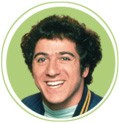 |
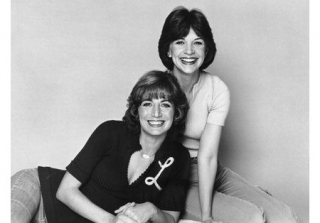 |
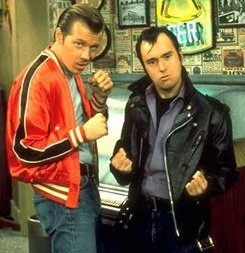 |
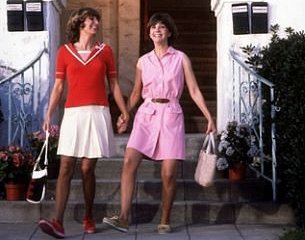 |
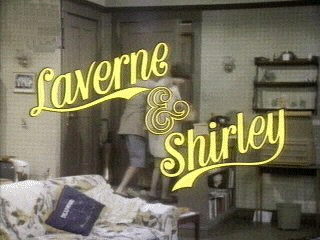 |
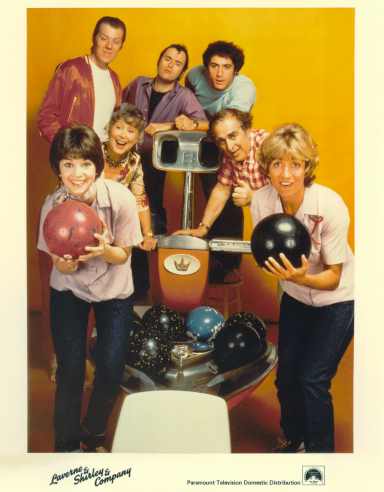 |
| Lenny Kosnowski as (Michael McKean) |
| Betty Garrett as (Edna Babish DeFazio) |
| Cindy Williams as (Shirley Feeney) |
| David L. Lander as (Andrew "Squiggy" Squiggman) |
| Eddie Mekka as (Carmine Ragusa) |
| Phil Foster as (Frank DeFazio) |
| Penny Marshall as (Laverne DeFazio) |
| Originally Introduced as characters on "HAPPY DAYS," Laverne De Fazio (Penny Marshall) and Shirley Feeney (Cindy Williams) "schlemiel-schlamazeled" their way into the Tuesday night ABC prime time line up and into the hearts of television viewers in 1976. The show, set in the late 1950s, centered on the two title characters, and was rated the number one program in its second year of airing. In the earliest years of the long-running sitcom, the two twenty-something women shared an apartment in Milwaukee and worked at Shotz Brewery, the local beer bottling plant. Many of the episodes focused on the humorous complications involving the women and/or friends. From ditching blind dates to goofing up on the conveyor belt at the bottling plant, Laverne and Shirley "did it their way" in Milwaukee until 1980 when ABC decided to change the setting of Laverne and Shirley to Burbank, California for a new twist. Aside from a change of climate and employment, now in Bradburn's Department store, the central characters and structure of the program remained the same until Williams left the program in 1982. Following her departure, the program continued for one year under the original title, but with Laverne alone as the central character. "There is nothing we won't try, never heard the word impossible, this time, there's no stopping us, we're goinna do it!" This line from the theme song of the sitcom describes the state of mind of the program's two main characters. With the advantage of two decades of hindsight, Laverne and Shirley painted a picture of the 1950s from the single, independent woman's point of view. The plots of the episodes reflected Laconcerns about holding a factory job, making it as a independent woman, and dealing with friends and relatives in the process of developing a life of one's own. Many plots revolved around the girls dating this man or that, or pondering the ideal men they would like to have met: sensitive, handsome doctors. If on the surface the characters appeared to be longing to fulfill the stereotypical 1950s role of woman, their true actions and attitudes cast them as two of television's first liberated women. They thought for themselves and made things happen in their social circles. Together they fought for causes, from workers' rights at the bottling plant to animal rights at the pound. They helped each other and they helped their friends, who added much texture and comic effect to the program. Their two male neighbors, Lenny and Squiggy provided much of the humor in the program with their greasy-1950s appearance and their ironic knack of entering at just the wrong time. If someone said "Can you imagine anything more slimy and filthy than that?", in would charge Lenny and Squiggy with the famous, distorted "hello!" Despite the fun poked at the two men, they were still portrayed as friends and thus were often caught up in the "Lucy-esque" escapades of Laverne and Shirley. Another prominent character, Carmine Ragusa or "The Big Ragu" was an energetic Italian singer. Friend to both women, Carmine was after Shirley's heart. Laverne and Shirley gave its lead characters room to explore boundaries and break some stereotypes common in television portrayals of woman prior to the 1970s. Shirley was portrayed as interested in marriage, yet she was not sure that Carmine was "the one", instead of settling, she kept her independence and her friendship with Carmine. Among the loudest characters on the program was Mr. Frank De Fazio, Laverne's widowed father who owned the local Pizza-Bowl where everyone congregated. In his eyes Laverne was still a little girl, and he frequently checked up on her, evoluated her dates, and attempted to invalidate her decisions. Edna, Frank's girlfriend acted as a buffer between father and daughter, and even more as a motherly figure to Laverne after she married Frank midway though the program's network run. Though Frank would express his overly protective and chauvinistic views, Edna's buffering reason and Laverne's stubbornness always won out. Laverne and Shirley was an early prime-time proponent of women's rights and placed much value in the viewpoints and experiences of 50's women, suggesting that even in that decade women could be independent. Since Laverne and Shirley was a spin-off of "Happy Days," and because the programs aired back to back, it was easy to cross over characters from one to another. Often Laverne and Shirley were visited by Arthur Fonzerelli (better known as THE FONZ), or ran into Richie Cunningham or Ralph Mouth (all from Happy Days) camping in the woods. Viewers were able to carry knowledge from one show (Happy Days) to the next (Laverne and Shirley) as characters shared experiences with each other outside the context of their own programs. The programs were thus able to layer meanings or overlap realities between previously mutually exclusive television families. While visits to or from Happy Days characters were always extra fun, Laverne and Shirley provided seasons of hilarious antics and left behind many memorable pictures uniquely their own---Laverne's clothing, always decorated with a large, cursive "L's," the milk and pepsi concoction that was her favorite beverage, the giant poster of Fabian, and Shirley's infamous Boo-Boo kitty, a two foot stuffed cat that was the true ruler of her heart. Laverne and Shirley may have been a female "odd-couple", Shirley fanatically neat and Laverne hopelessly sloppy, but they balanced each other and provided a system of mutual support demonstrating that women could compete in the world of work as well as in the world of ideas. From a 1950s perspective, for two young women, that indeed was "making our dreams come true". |
| Click here to hear Theme Song (Milwaukee Years) |
| Lenny and Squiggy at the Pizza-Bowl |
| Carmine Ragusa |
 |
 |
| Click here to see the Theme video clip |
| Click here to hear another Theme song (Burbank Years) |
